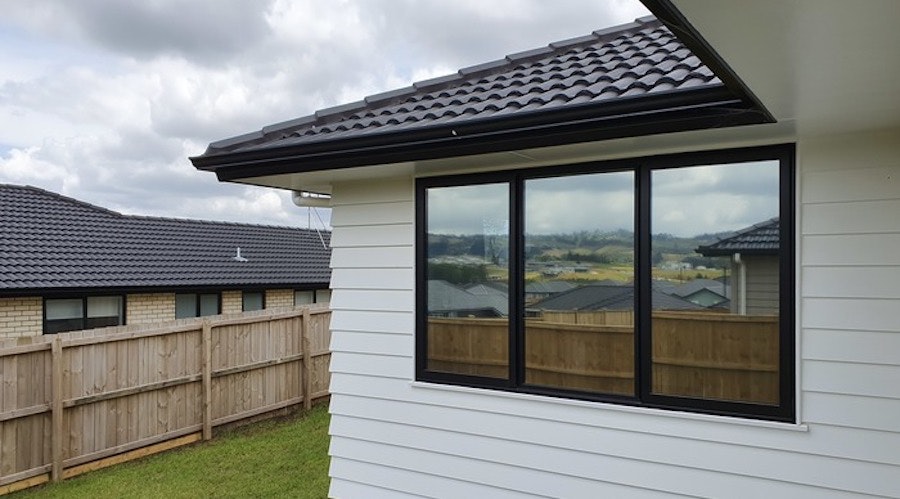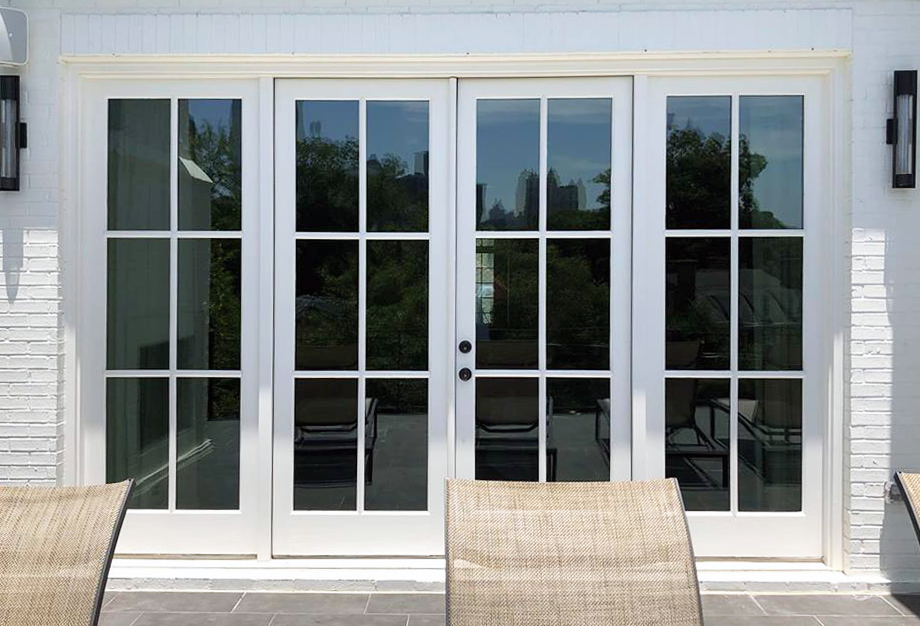Exactly How Residential Window Tinting Improves Your Home's Energy Efficiency
Residential home window tinting provides a compelling remedy for homeowners looking for to improve energy effectiveness within their space. By using specialized films to home windows, it properly lowers warm transfer, therefore maintaining indoor temperature levels and decreasing the requirement for excessive home heating or cooling. This not only reduces power usage but additionally gives an extra comfy setting by mitigating glow. However, understanding the subtleties of how tinting jobs and selecting the proper type for your home can be crucial. Strangely enough, what aspects should one think about prior to making this financial investment?
Understanding Window Tinting
Recognizing window tinting is important for property owners seeking to enhance both comfort and energy efficiency in their space. Residential Window Tint. Home window tinting entails the application of a thin movie to the interior or exterior surface of glass home windows. This film can considerably modulate the amount of sunlight and warm that goes into a home, thus influencing indoor environment conditions
There are various types of window tinting films available, each with distinct residential properties. The performance of window tinting is frequently determined by its Visible Light Transmission (VLT) percentage, which suggests how much light can pass via the movie.
Benefits of Energy Performance
Home window tinting not only improves looks however additionally plays a substantial function in enhancing power effectiveness within household spaces. By lowering heat transfer via home windows, tinted films create an extra secure indoor climate, which can result in significant reductions in energy intake for heating & cooling. This power performance converts into reduced utility expenses, offering home owners with substantial long-term financial savings.

Additionally, home window tinting boosts the comfort of living rooms. By lessening glare and obstructing damaging UV rays, tinted windows develop a more pleasant setting, which can bring about improved health for residents. The protection against UV rays also aids maintain furniture and flooring from fading, adding to the long life of family products.
Just How Tinting Works
Tinting films operate via a mix of advanced products and technologies created to manage the quantity of solar energy entering a home. Largely composed of polyester, these movies often integrate metal or ceramic fragments that take in and mirror warmth. This twin capacity permits them to significantly decrease the infiltration of ultraviolet (UV) rays and infrared radiation while permitting noticeable light to pass through.
The performance of home window tinting is gauged by its solar warmth gain coefficient (SHGC), which indicates just how much solar power is sent through the home window. Lower SHGC values are preferable as they denote better warm denial. Additionally, window tints can include a range of shades, permitting house owners to tailor their aesthetic preferences while boosting energy efficiency.
Additionally, these movies work as a barrier, preventing heat loss throughout cooler months by showing indoor heat back right into the space. This thermal insulation result matches the cooling advantages obtained throughout warmer months, contributing to a balanced indoor environment year-round. By taking care of solar energy properly, property home window tinting not only boosts comfort however also plays an essential duty in reducing energy intake and decreasing utility costs.
Choosing the Right Color

There are numerous kinds of home window movies available, consisting of colored, metalized, and ceramic. Colored movies are cost-effective yet might have limited sturdiness. Metalized movies supply much better warmth rejection however can disrupt digital signals. Ceramic films provide superb warm control without jeopardizing presence and are extremely sturdy, making them a popular selection.
Visible light transmission (VLT) sites is another crucial variable, as it indicates the quantity of all-natural light that can pass via the colored glass. Homeowners need to pick a color with a VLT that complements their illumination preferences while still offering appropriate glow reduction.
Furthermore, examining the solar heat gain coefficient (SHGC) can assist determine just how well a tint can obstruct warmth from sunlight. A lower SHGC indicates far better heat control, ultimately enhancing energy performance.
Setup and Maintenance Tips
Proper setup and upkeep are crucial elements in making the most of the advantages of household window tinting. To achieve optimal outcomes, it is suggested to hire a qualified professional for installment. This makes sure that the color is used properly, staying clear of check these guys out air bubbles, creases, or misalignment that could endanger efficiency. Experts likewise use specialized methods and tools, which can improve the resilience and effectiveness of the color.
Adhering to installment, upkeep is important to lengthen the life of the window film. It is suggested to wait at the very least 30 days before cleaning the colored windows to permit the adhesive to treat fully.
Furthermore, normal examinations are valuable. Check for any peeling or bubbling, which could suggest inappropriate installation or wear with time - Residential Window Tint. Attending to these concerns without delay can protect against more damages and maintain energy efficiency. By sticking to these installment and upkeep tips, property owners can guarantee their home window tinting remains to provide considerable power financial savings and convenience for many years ahead.
Final Thought
In conclusion, domestic home window tinting serves as an efficient solution for enhancing energy performance within homes. By reducing heat transfer and obstructing dangerous UV rays, home window movies contribute to lower energy consumption and boosted interior comfort.
Window tinting entails the application of a thin movie to the interior or outside surface area of glass windows. By lowering heat transfer via home windows, colored films produce an extra stable interior climate, right here which can lead to significant decreases in power intake for home heating and cooling.The performance of home window tinting is determined by its solar warmth gain coefficient (SHGC), which indicates exactly how much solar power is transferred with the home window. By managing solar energy successfully, household window tinting not only enhances convenience yet also plays an important function in minimizing power usage and decreasing energy costs.
By reducing heat transfer and blocking dangerous UV rays, home window movies add to decrease power intake and enhanced interior convenience.
Comments on “Residential Window Tint: The Eco-Friendly Service for Your Home”